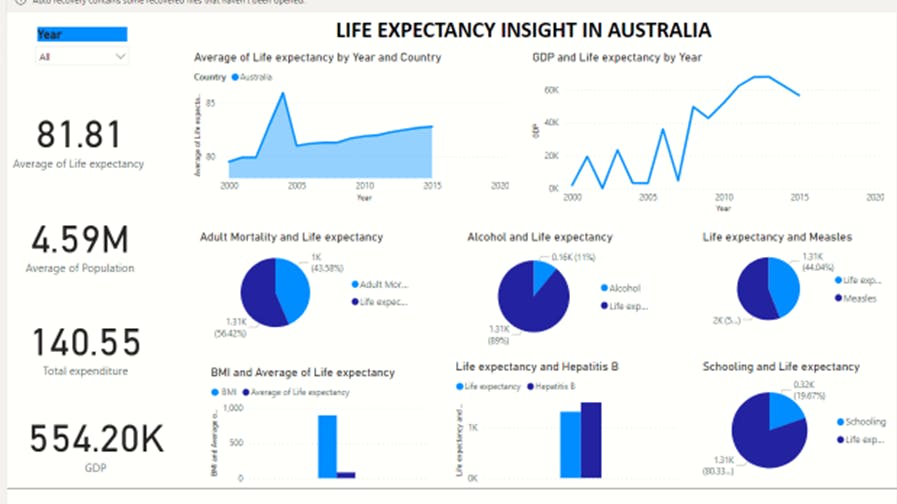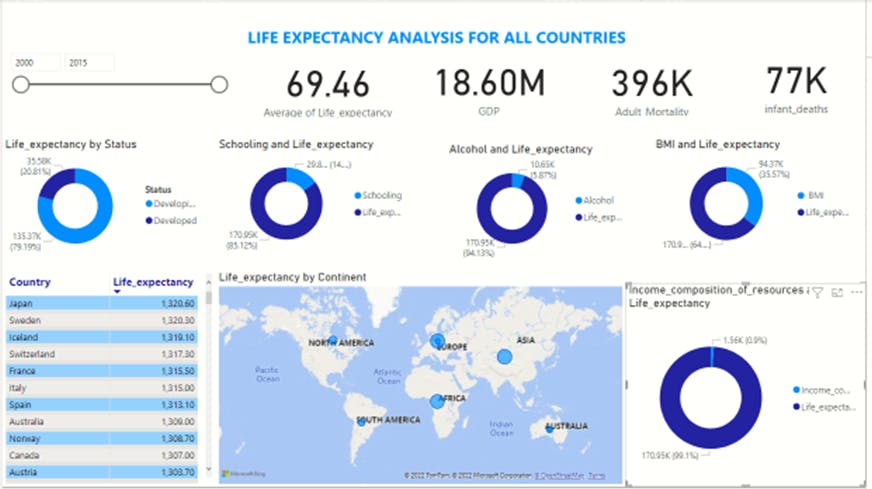Analysis of life expectancy rate in Australia from the year 2000-2015 life expectancy can be referred to as the number of years a person is expected to live from birth.

From the visualizations above, some factors were shown to affect life expectancy. Some of the positive factors include Immunization coverage, Health Expenditure, etc While some of the negative factors may include drinking alcohol and eating habits which affect Body Mass Index (BMI), infant and adult mortality rates Australia is chosen because it is among the countries that enjoy one of the highest life expectancies in the world. The average life of expectancy within the years 2000 – 2015 is calculated to be 81.81 with the total expenditure to be 140.55, GDP OF 554.20K, and an average growth rate of 0.25% over the total population of 4.59M. The effect ratio of adult mortality on life expectancy is 43.5%, effect of Average Body mass index (BMI) on average life expectancy is around 80 to 85. Alcohol has an 11% effect on life expectancy. Schooling has almost 20% on life expectancy. Immunization coverage on life expectancy for hepatitis B is 1500k and measles is 44%. Our analysis shows that year 2004, 2000,2011, and 2014 has the highest expectancy rate, adult mortality, highest percentage expenditure, and highest measles respectively in Australia. Analysis of life expectancy rate of other countries from years 2000-2015

From the above analysis, the following was observed. Japan has the highest expectancy rate as of 2015. Densely populated countries have a higher average life expectancy than sparse populated countries poorer countries because of their high standards of living, effective health systems, and other resources invested in determinants of health (e.g., sanitation, housing, education). Reckless eating habits can affect BMI which when more significant than 30 shows obesity and this can affect life expectancy. Vaccinations have helped to eliminate conditions that result in certain death and increased health conditions among children and adults, and this has helped to increase life expectancy. If life expectancy is higher, population sizes will increase as more infants are born, whereas if the mortality rate is higher, population sizes will decrease as more infants die. High consumption of alcohol can be associated with accidents, disease burden, and social problems, therefore people who consume more alcohol are expected to have a short life expectancy. Finally, the analysis also shows that people with less education died compared to people with higher education. Recommendations Knowing the different factors that can affect life expectancy, actions should be made towards the improvement and investing in the positive ones that can increase life expectancy and reduce the ones that can decrease life expectancy.
Dataset source: kaggle.com/datasets/kumarajarshi/life-expec.. Image source: bbc.com/news/health-44107940
Thanks for reading

